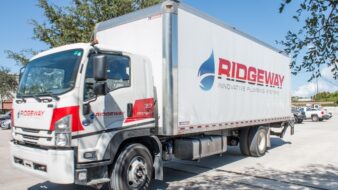With the recent devastation from Hurricane Sandy in the Northeastern United States, homeowners may have questions about what to do with wet or damaged fiber glass or rock and slag wool insulation. The North American Insulation Manufacturers Association (NAIMA) has a number of free resources, videos and guides on its website, http://www.naima.org, to aid homeowners with building decisions and provide tips on choosing and installing insulation.
Recommendations for Wet Insulation
NAIMA, along with the American Red Cross and the Federal Emergency Management Administration (FEMA), advises homeowners to remove and replace fiber glass insulation that has been wetted from rising flood waters, since the water may be contaminated. Fiber glass or rock and slag batt insulations are unique in that, if they are wetted from a clean water source such as a potable water pipe, they can be removed, dried out and reused. All loose-fill insulations of any kind that are wetted should be removed and replaced, since they can lose their insulating properties, or R-value, when wet. And, some loose-fill insulations such as cellulose, that are treated with chemical fire retardants, can also lose their ability to resist fire after being wetted.
Insulation Pays
When homeowners are rebuilding, they should install insulation to the proper R-value. In most areas of the country the Department of Energy and NAIMA advises installing an R-49 in the attic. In the extreme southern portions of the country, an R-38 is appropriate. For more on the proper levels of insulation in a certain area, and for information on wall, basement and crawlspace insulation recommendations, visit http://www.naima.org. Homeowners installing insulation may also quality for a tax credit or rebate. NAIMA’s website provides, http://www.naima.org, homeowners with information on Federal, state and local tax incentives and rebates for energy efficiency upgrades.
Insulation is an investment that pays for itself many times over. The initial costs to install insulation are typically recouped in three to seven years depending on how much you already have and how much more you add, and fiber glass and mineral wool insulation continues to save energy and help lower bills for the life of the home. Savings may vary. Find out why in the seller’s fact sheet.
NAIMA provides answers to Frequently Asked Questions (FAQs) including:
• Recommended R-values for insulation in each state
• Where to put insulation in a home
• How to choose an insulation contractor
• Local and state tax incentives and rebates for adding insulation to your home
Homeowners can find free videos and publications at http://www.naima.org that address:
• Installing fiber glass batt and loose fill insulation (English and Spanish)
• Comparisons of various insulation products
• Labeling and advertising of home insulation
• Insulation and fire safety
• Insulating for noise control




Join the conversation: